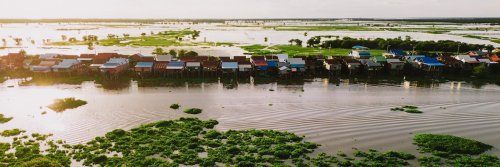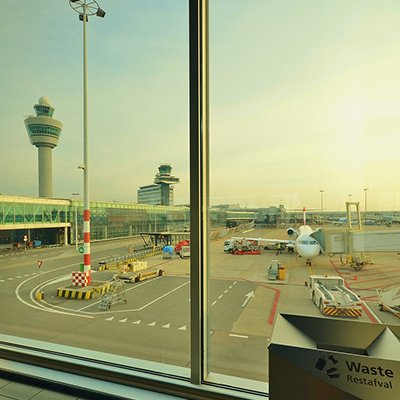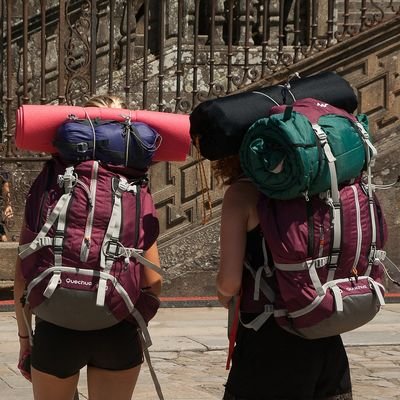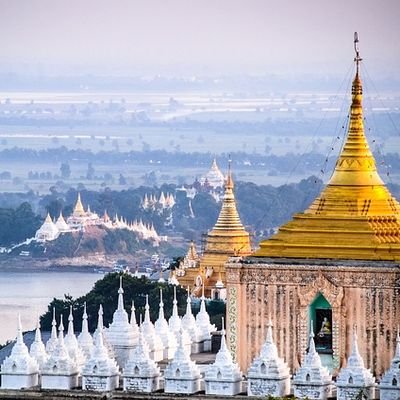When you are over poking around ancient temples or meandering through national parks, take a tour, and I do say, 'take a tour' with a responsible tourist agency, to the Rolous Markets and the floating village of Kampong Phluk at Tonle Sap. I hate tours, but sometimes it's a necessity when in a foreign country to avoid the touts and scams at high-profile tourist destinations. Many tours will include a walk through the local colorful market with a knowledgeable guide to explain what you are looking at, spread out sometimes in total disarray on the red earth. A guide will also have negotiated the boat price to venture out onto the lake to gawk at the houses on stilts and the flooded forest. It's a fascinating excursion that's well worth doing.
Tonle Sap Lake, southwest of Siem Reap, is a unique body of water that is a part of the Mekong River system. It's the largest freshwater lake in Southeast Asia, with an ecosystem so diverse that in 1997 it was designated as a Biosphere Reserve by UNESCO. This quirky body of water takes on different personalities depending on the seasons. From November to May, during the dry season, its water flows south-easterly to the sea. It connects with the massive Mekong River, eventually splitting into a patchwork of streams throughout the Mekong Delta region in Vietnam. During the wet season, when the monsoon winds descend with their heavy grey rain clouds, the Mekong River swells, causing the water to flow back in a north-westerly direction into Tonle Sap. The overflow rises the lake, flooding nearby woods and crops and creating the perfect breeding ground for numerous indigenous fish species. Once the monsoon season is over, the water flow reverses yet again. It's a continuous ebb and flow.
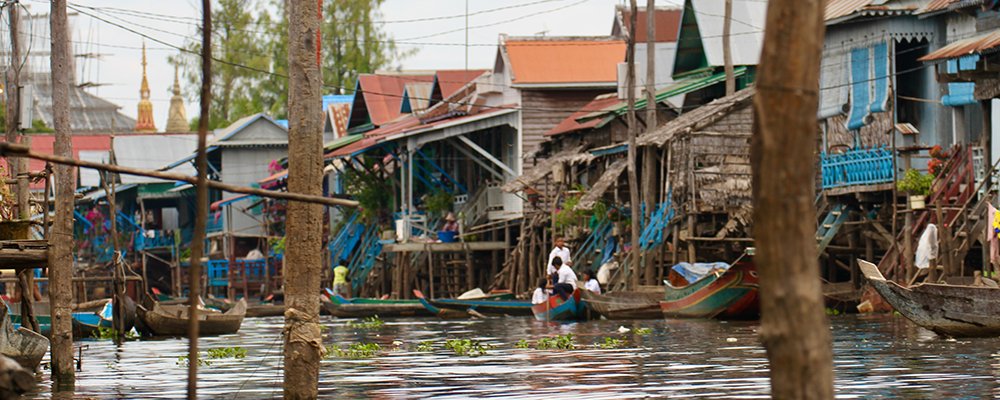
At the height of the wet season, Tonle Sap Lake increases over four times its size (from 1,050 to 4,500 sq miles) with a depth rising from one meter to nine meters. The lake is the historical lifeblood of the region. During the Khmer Empire in the 12th Century, the area flourished with a population of more than a million. The locals' way of life was then, and still is today, one of irrigation (rice) and freshwater fishing, depending on the season. The Tonle Sap Lake is a vast wetland ecosystem and a massive breeding ground for numerous globally threatened bird species, such as the Painted Stork, the Grey-Headed Fish Eagle, the Spot-billed Pelican, and the Black-headed Ibis, amongst others.
There are three main ‘floating’ villages: Chong Khneas, predominantly Vietnamese and the closest to Siem Reap; Kampong Khleang, the furthest from Siem Reap with the largest population, where houses are on stilts about ten meters high; and Kampong Phluk, where the village people live in stilted houses roughly six meters high surrounded by mangroves. During the dry season, though, with their houses virtually like high-rises on dry ground, they build temporary floating homes over the water.
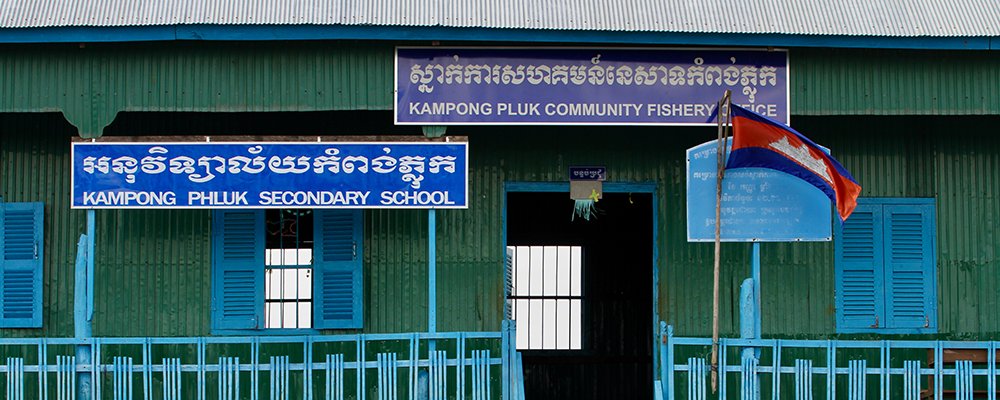
It was the wet season when I visited Kampong Phluk, and there was water, water, and more water. Tourists become voyeurs of a peasant lifestyle of floating water gardens, bobbing canoes, fish nets forever being mended, and colorful wooden houses on stilts. Village life is laughter, smiles, and on some faces, grim determination. The surroundings of the murky brown water carry reflections of dappled mangroves, and the wash of canoes is interspersed with the splash of paddles. The lake is a flooded forest in a green canopy of twisted limbs as if they are desperately trying to escape the flooding water. It's a subsistence lifestyle, a traditional eking out of a living.
The houses are on high wooden stilts where steps from the verandahs disappear into the dank water. Fishing nets are strung up around the bases, hessian bags hold plastic bottles, old car tyres, and even a bike hangs below the floor of a house. The houses' brightly colored shutters are open to whatever breeze they can capture. Floating green gardens grow in an exercise of aquaculture at its most unique. On one verandah, there were plastic bottles cut in half and arranged in rows like in a nursery. The wood is stored in the high branches of the trees out of the reach of the water to keep it dry.
I saw many women squatting in canoes chatting or gossiping to a person perched on rickety house steps. Or 'canoe to canoe', they were all engrossed in neighborly chitchat. Shopping was in the form of goods piled high on a canoe, and the vendor came to the bottom of the house stairs, which in some cases looked more like wooden ladders. Many mothers with babies or their young children lingered sitting in canoes around a central tourist platform, waiting to ferry tourists through the flooded forest of mangroves. Like a flock of birds impatient for a morsel of food, they were vying with each other for the trade.
The village children expertly paddled their canoes, as I am sure they know how to row a boat, probably before they learn to walk. Many of the kids have small frames with their ribs showing, depicting the poor economic status in which they survive. But kids will be kids, and there were many playing amidst the flooded forest as if in a backyard, going to school in a canoe, helping parents mend nets, or collecting floating plastic bottles. Many were shyly smiling at the gawking strangers whilst they were playfully pushing each other out of the canoes. Instead of fleet of foot, they were fleet in their boats as they raced through the tangled web of mangroves.
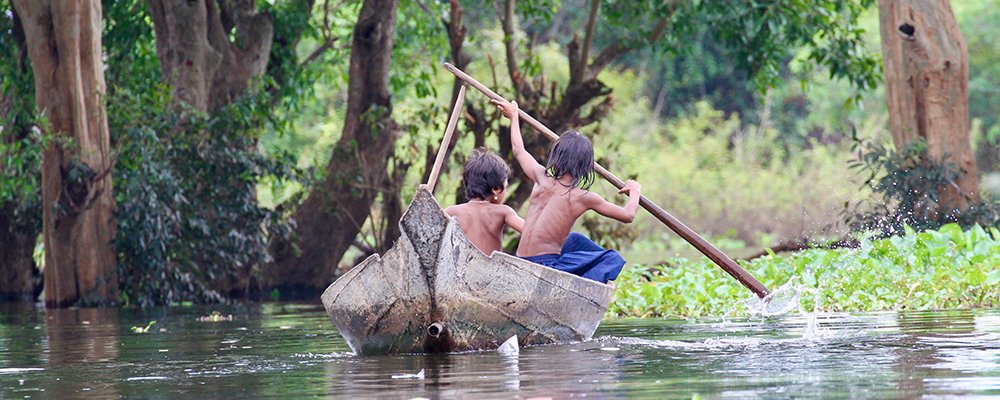
The Tonle Sap area is a tourist hub, and there are plenty of people ready to take advantage of tourists. The hotel I was staying at even had a warning paper in their compendium telling guests not to go to Tonle Sap without a guide. Scams include being talked into buying powdered baby milk for a starving infant. They will even take you to the shop to buy it, of course, at a very inflated price. You think you are doing a kind thing, but the minute you are out of sight, it is returned to the shop, and the child gets a cut of the money for sucking you in. The starving baby, if there is one, never sees it!
Taking a tour of Tonle Sap reminds you to be humble and not to approach this excursion as a human zoo moment, but as a considerate human being wishing to know about a way of life that to many is totally foreign and harsh.
Gail Palethorpe, a self proclaimed Australian gypsy, is a freelance writer, photographer and eternal traveller. Check out her website Gail Palethorpe Photography and her Shutterstock profile.

